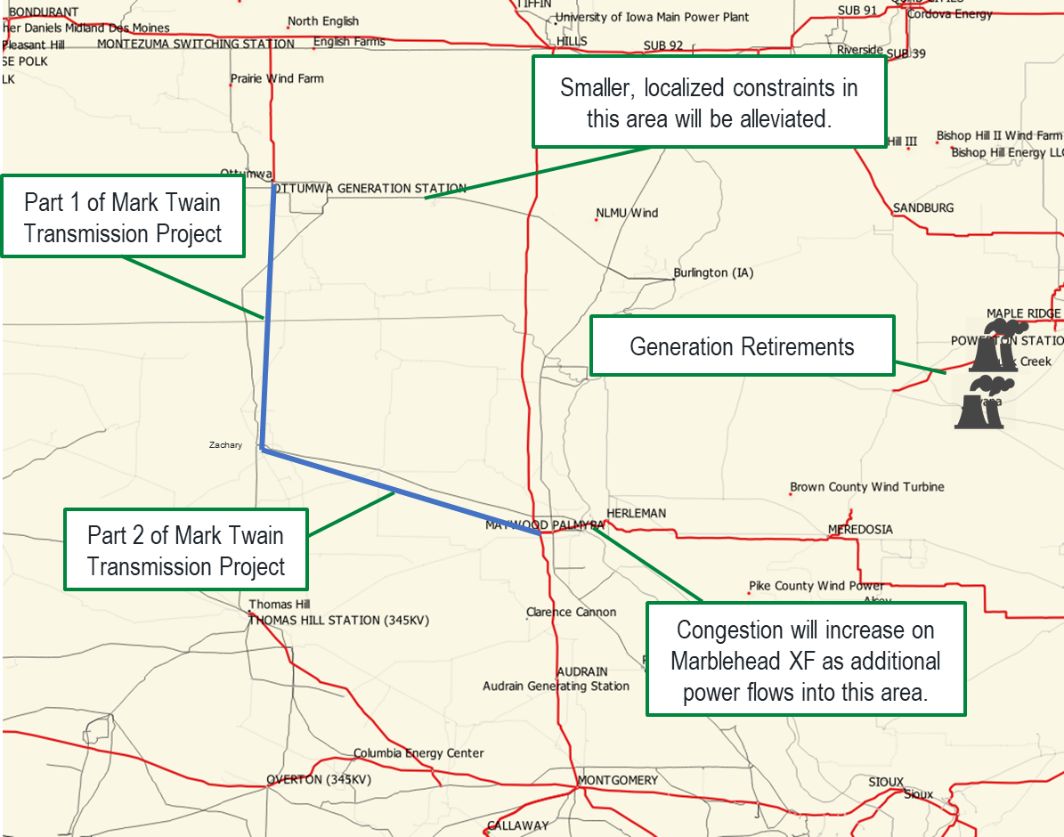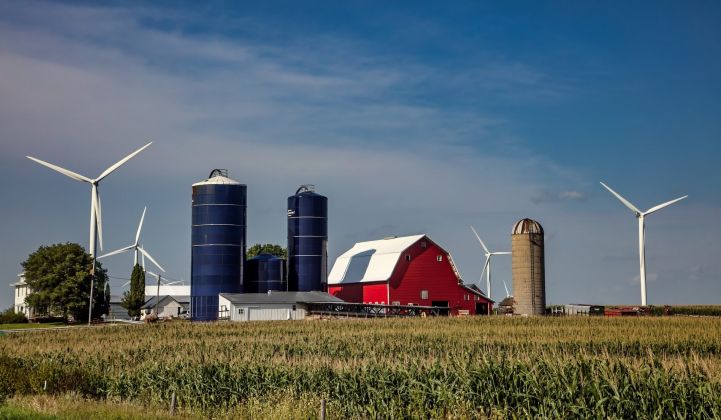The U.S. transmission grid is facing the unprecedented challenge of a shifting generation portfolio stemming from massive additions of intermittent renewable energy.
However, there is a serious issue regarding transmission expansion plans: The process of building new generation happens much faster than building new transmission. This means that attempts to alleviate congestion or deliver power to a new area can sometimes have unintended consequences.
Ameren’s new 100-mile, 345-kilovolt transmission line in the region overseen by the Midcontinent Independent System Operator, dubbed the Mark Twain Transmission Project, is the latest example of the challenges regional transmission organizations face when it comes to the shifting grid in the Midwest.
MISO Transmission Upgrades and Generation Retirements

Source: U.S. Energy Information Administration
New wind capacity and coal retirements
The Mark Twain project was conceived to allow more wind capacity from Iowa and Missouri to travel east into Illinois at the Marblehead transformer. Wind farms in the area had been injecting zero-marginal-cost power into the grid near Palmyra and causing new patterns of transmission congestion. Ameren began construction on the line in May 2018, and it officially went into service on December 19, 2019.
When the Mark Twain project was first proposed in 2011, nameplate wind generation capacity in MISO was just under 10 gigawatts. By the end of 2018, wind generation capacity in MISO had reached 18.2 gigawatts.
The Marblehead transformer is one of the most constrained areas in MISO, located in a part of the grid that bottlenecks the amount of wind generation that can flow from Iowa and Missouri into Illinois.
The addition of the Mark Twain line also happens to coincide with the retirements of four Illinois coal plants totaling over 2 gigawatts of capacity: Coffeen, Havana, Hennepin and Duck Creek. The first three retirements happened in August 2019, and the final plant, Duck Creek, retired on December 13 — just days before the new line was scheduled to going into service.
The latter three plants provided reactive power to the Marblehead transformer. With the retirement of these plants, the grid is poised to be thrown out of balance as additional power flows over those lines and directly through the Marblehead transformer.
On high wind days in Iowa and Missouri, power from new wind capacity in the region will flow toward Marblehead via the new line — making the bottleneck worse and causing congestion. In other words, rapid wind development since 2011, combined with the retirement of several major coal plants, means the new Mark Twain project will cause additional congestion at Marblehead even as it eases congestion issues near Palmyra.
The increased congestion will result in large price discrepancies between locations, disincentivizing new wind farm development in Iowa and Missouri and causing a less efficient dispatch of generation.
The best-laid plans
Upgrades similar to the Mark Twain project are necessary to allow new wind power in rural areas to efficiently reach large cities where it is needed.
However, this project illustrates the difficulties of maintaining an efficient and reliable grid in the face of rapidly expanding intermittent wind and solar capacity. Regional transmission organizations operate competitive markets, and as new low-cost wind, solar, and gas generation continue to price out older and more expensive coal generation, flow patterns and congestion will continue to change.
Meanwhile, storage and smart grid technology continue to advance, which may alleviate the need to build out certain transmission expansions. Planning for new transmission must take these changes into account.
***
Elliot Gordon is a power analyst with Genscape, part of Wood Mackenzie. Elliot works with Genscape's real-time power plant output and transmission flow data.




